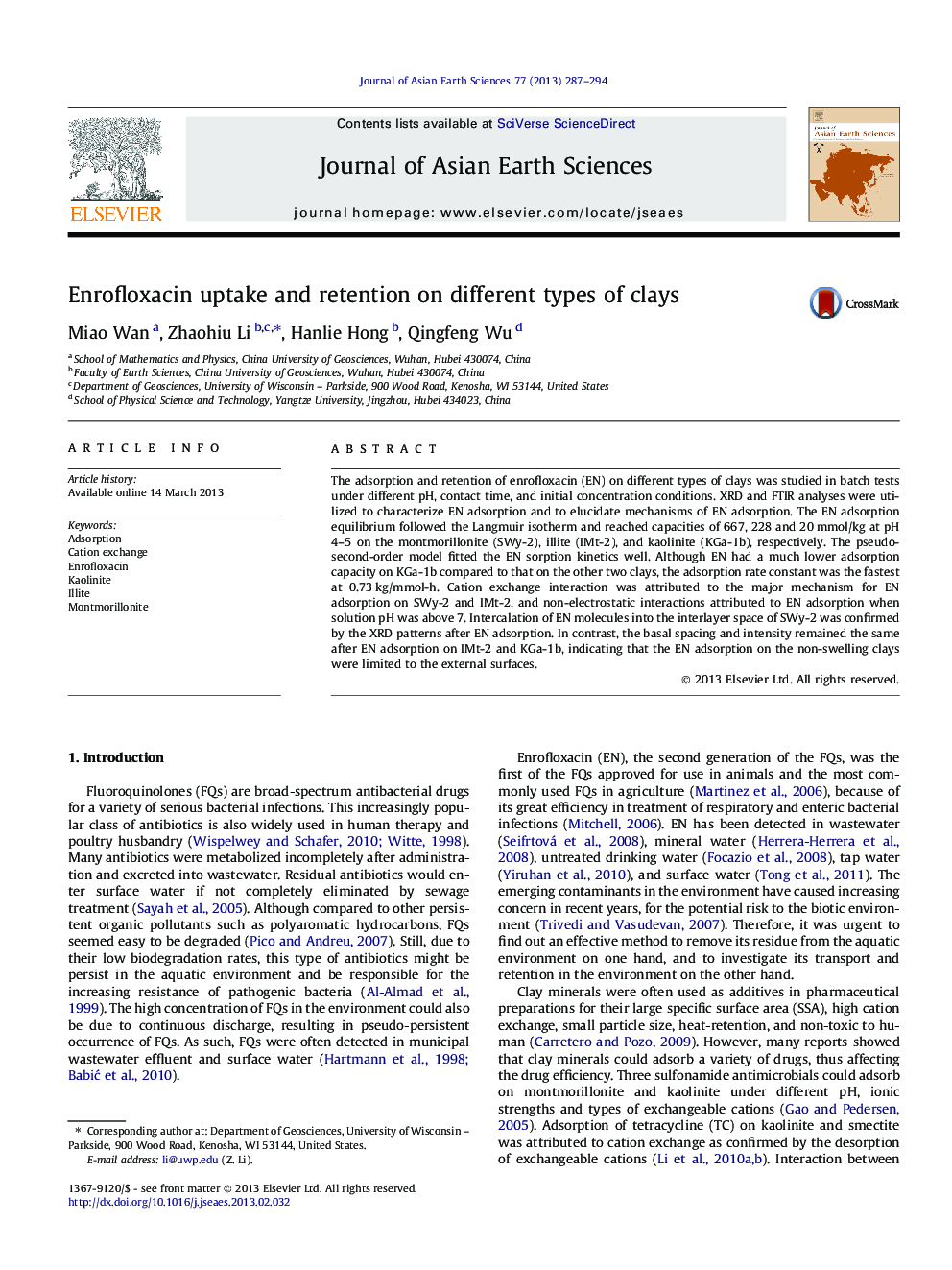| Article ID | Journal | Published Year | Pages | File Type |
|---|---|---|---|---|
| 6444580 | Journal of Asian Earth Sciences | 2013 | 8 Pages |
Abstract
The adsorption and retention of enrofloxacin (EN) on different types of clays was studied in batch tests under different pH, contact time, and initial concentration conditions. XRD and FTIR analyses were utilized to characterize EN adsorption and to elucidate mechanisms of EN adsorption. The EN adsorption equilibrium followed the Langmuir isotherm and reached capacities of 667, 228 and 20Â mmol/kg at pH 4-5 on the montmorillonite (SWy-2), illite (IMt-2), and kaolinite (KGa-1b), respectively. The pseudo-second-order model fitted the EN sorption kinetics well. Although EN had a much lower adsorption capacity on KGa-1b compared to that on the other two clays, the adsorption rate constant was the fastest at 0.73Â kg/mmol-h. Cation exchange interaction was attributed to the major mechanism for EN adsorption on SWy-2 and IMt-2, and non-electrostatic interactions attributed to EN adsorption when solution pH was above 7. Intercalation of EN molecules into the interlayer space of SWy-2 was confirmed by the XRD patterns after EN adsorption. In contrast, the basal spacing and intensity remained the same after EN adsorption on IMt-2 and KGa-1b, indicating that the EN adsorption on the non-swelling clays were limited to the external surfaces.
Related Topics
Physical Sciences and Engineering
Earth and Planetary Sciences
Geology
Authors
Miao Wan, Zhaohiu Li, Hanlie Hong, Qingfeng Wu,
